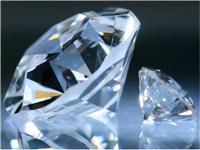

Super-hard material is a material whose Vickers hardness exceeds 40 GPa. These materials have gained a lot of interest due to their extensive application in industrial areas, such as the polishing, cutting tools, and hard wear protective coatings. Synthetic diamond and cubic boron nitride are major commercial high pressure materials. Because of the huge commercial application of super-hard material, a lot of attempts have been tried to search and create new super-hard materials. High pressure as one of the fundamental thermodynamic variables can generate the materials with high values of atomic, electron density and high bonding energies which may lead to new super-hard material.
Fig.1. Simulated structures of the C60 (magenta) and m-xylene solvent (blue) at 0.4 GPa (left)
and its superhard form (right) after compressed by 40 GPa, then quenched to the ambient pressure (right).
The scientist in HPSTAR discovered a long-range ordered material constructed from units of amorphous carbon clusters that was synthesized by compressing solvated fullerenes (Fig.1). This material has the exceptional hardness which can dent the diamond. It can also be preserved back to ambient conditions which could have a wide practical application, such as a protective coating.
In HPSTAR, the research areas of super-hard material include (but not limited to) the following aspects:
(1). Search for new super-hard materials whose hardness values are comparable with or even superior to diamond or cubic boron nitride;
(2). Explore the mechanism of the super-hard materials;
(3). Search for materials with excellent hardness and tenacity.
